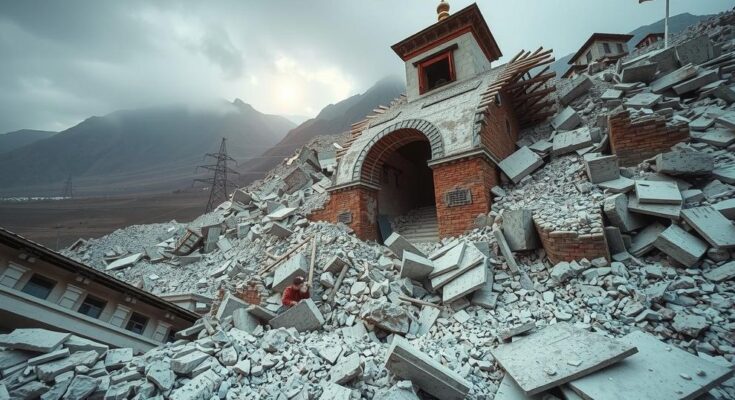A devastating earthquake with a magnitude of 7.1 hit Tibet on January 7, killing at least 95 people and damaging over 1,000 homes. Aftershocks followed, impacting local regions including Nepal and India.
On January 7, a powerful earthquake struck Tibet, resulting in the loss of at least 95 lives. Occurring at 09:05 local time in Dhingri district, the quake was located near the Nepal border and generated considerable tremors felt in Kathmandu and parts of India as reported by The Guardian. The US Geological Survey recorded the earthquake at a magnitude of 7.1, while Chinese authorities reported it at 6.8. This catastrophic event resulted in the destruction of over 1,000 homes and was followed by around 50 aftershocks within the hours thereafter.
Earthquakes are common in the Himalayan region due to the tectonic activity caused by the collision of the Indian and Eurasian plates. This specific earthquake highlights the vulnerabilities of mountainous and densely populated areas where infrastructure may not be adequately prepared for such significant seismic events. The aftermath often leads to substantial humanitarian crises, necessitating urgent international support and intervention to aid affected populations and rebuild communities.
In summary, the earthquake that struck Tibet on January 7 tragically resulted in the loss of nearly 100 lives, alongside significant infrastructural damage. This incident serves as a stark reminder of the ongoing seismic risks faced by regions along tectonic boundaries. Ongoing assessments and recovery efforts will be essential to address the aftermath and support the impacted communities.
Original Source: babel.ua




